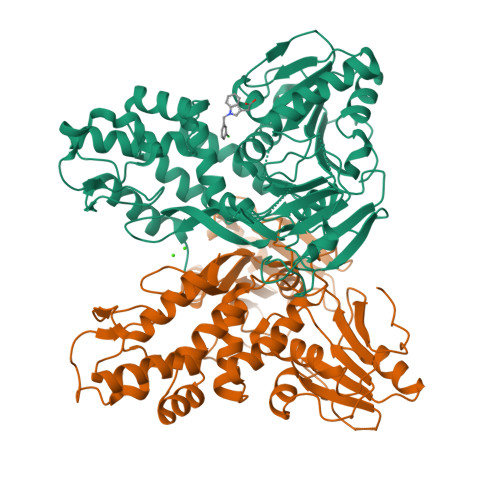Integrated strategies for identifying leads that target the NS3 helicase of the hepatitis C virus.
Laplante, S.R., Padyana, A.K., Abeywardane, A., Bonneau, P., Cartier, M., Coulombe, R., Jakalian, A., Wildeson-Jones, J., Li, X., Liang, S., McKercher, G., White, P., Zhang, Q., Taylor, S.J.(2014) J Med Chem 57: 2074-2090
- PubMed: 24467709
- DOI: https://doi.org/10.1021/jm401432c
- Primary Citation of Related Structures:
4OJQ, 4OK3, 4OK5, 4OK6, 4OKS - PubMed Abstract:
Future treatments for individuals infected by the hepatitis C virus (HCV) will likely involve combinations of compounds that inhibit multiple viral targets. The helicase of HCV is an attractive target with no known drug candidates in clinical trials. Herein we describe an integrated strategy for identifying fragment inhibitors using structural and biophysical techniques. Based on an X-ray structure of apo HCV helicase and in silico and bioinformatic analyses of HCV variants, we identified that one site in particular (labeled 3 + 4) was the most conserved and attractive pocket to target for a drug discovery campaign. Compounds from multiple sources were screened to identify inhibitors or binders to this site, and enzymatic and biophysical assays (NMR and SPR) were used to triage the most promising ligands for 3D structure determination by X-ray crystallography. Medicinal chemistry and biophysical evaluations focused on exploring the most promising lead series. The strategies employed here can have general utility in drug discovery.
Organizational Affiliation:
Departments of Chemistry and Biological Sciences, Boehringer Ingelheim (Canada) Ltd, R&D , 2100 Cunard Street, Laval, Québec H7S 2G5, Canada.




















